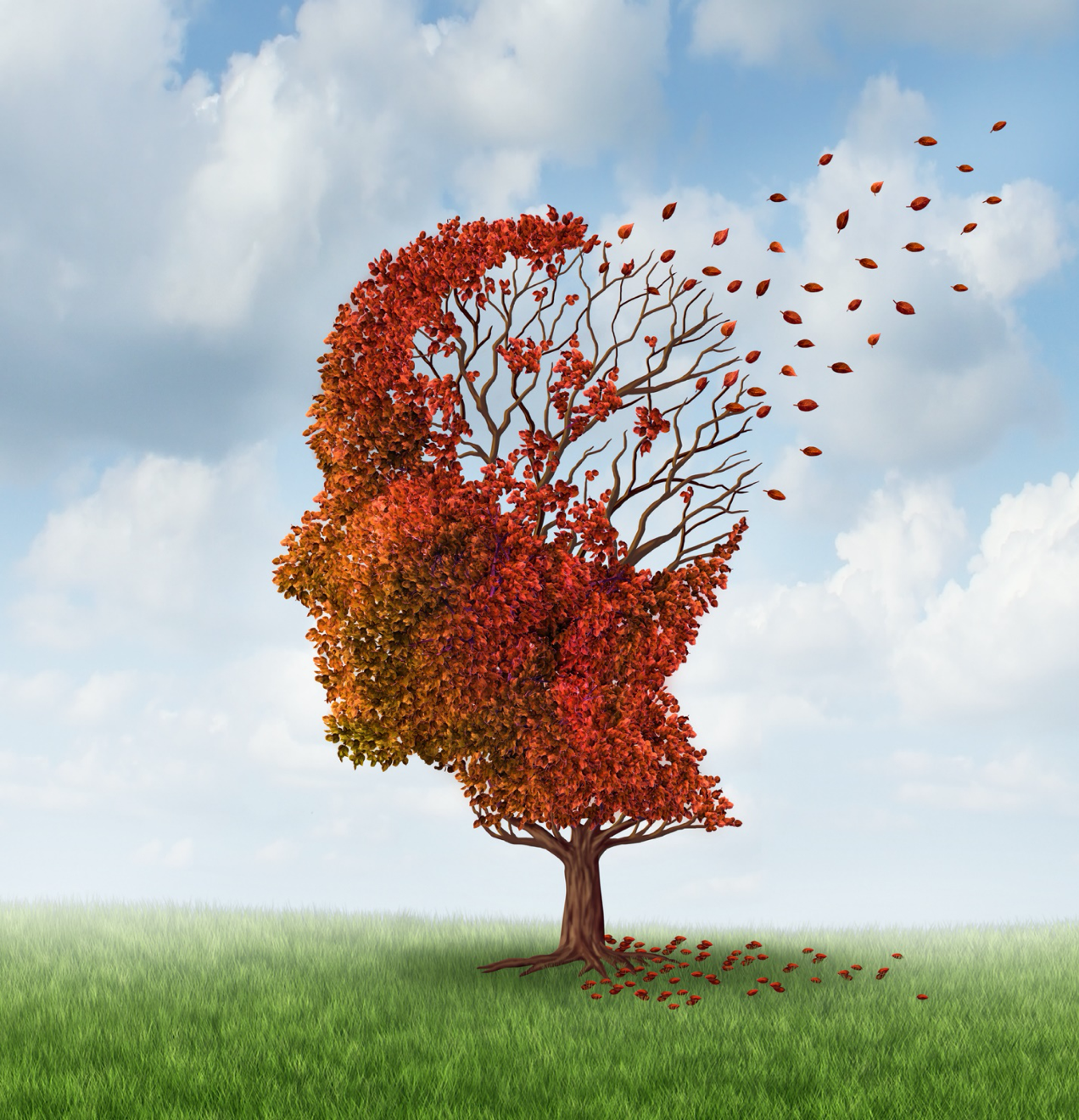How Nootropics Can Prevent Alzheimers Disease
Introduction.
Alzheimer’s disease (AD) is the most common type of age-related dementia, characterized by a progressive decline in hippocampal-dependent functions, including cognitive deterioration, memory loss, behavioral and functional disturbances, and functional impairment. Clinically, AD is diagnosed by dementia, while pathologically it is diagnosed by two cardinal lesions including senile plaques caused by the extracellular deposits of amyloid-beta fibrils and neurofibrillary tangles formed by the abnormal intracellular aggregation of tau protein.
The etiopathogenesis of Alzheimer’s disease is multifactorial. Oxidative stress and cholinergic dysfunction have been suggested to play a vital role in the onset and progression of the disease. During the progression of Alzheimer’s disease, neurons from different parts of the brain are destroyed, including those areas that enable basic bodily functions like swallowing and walking. Hence, AD patients in the final stage usually become bedridden and eventually die. Advances in science and technology, as well as good healthcare delivery, have increased life expectancy. Unfortunately, it is accompanied by the cost of a higher frequency of age-related diseases such as Alzheimer’s disease.
The “nootropic” or simply known as “smart drug”, “memory-enhancing drug” or “brain booster” is a common terminology given to compounds with the ability to enhance mental performance, although people with a history of mental disorder may be susceptible to its adverse effects. By definition, nootropics are compounds that increase mental abilities including attention, concentration, memory, and motivation.
There has been a lot of research conducted on AD’s prevention and treatment strategies. Although different approaches were implemented to lessen the progression of the disease, there is no cure for Alzheimer’s disease. Hence, nootropics have been explored for this purpose and have been yielding some promising results. This review aimed to elucidate the general view on AD pathogenic hypotheses and common nootropics being used in Alzheimer’s disease research.
All the vital information required for this review was gathered by searching the relevant keywords including, nootropics, Alzheimer’s disease, amyloid-beta hypotheses, tau hypotheses, cholinergic hypotheses, oxidative stress, and cognitive impairments from published articles. The search on nootropics is basically from 2011 to 2018, and reliable scientific databases were searched namely ScienceDirect, Scopus, PubMed, and Google Scholar.
Alzheimer’s Disease
AD is a heterogeneous disorder with divergent clinical symptomatology, various ages of onset, presence or absence of germline mutations, degree and spread of pathological changes, existence or non-existence of risk factors and manifestation or non-appearance of polymorphic susceptibility alleles. Therefore, it is not surprising that several hypotheses with “treatment insinuations” have been proposed. However, it is unfortunate that none of these hypotheses have led to tangible treatment benefits or a cure for AD. The most widely acclaimed hypotheses in the scientific community include amyloid cascade hypotheses, tau hypotheses, cholinergic hypotheses, and oxidative stress among others.
Amyloid Cascade Hypothesis
The vast majority of research in the field of AD have focused on amyloid cascade hypotheses since the early 90s when AD research began to gain momentum. The amyloid cascade hypothesis states that “the pathogenic cascade of AD initiates upon accumulation, oligomerization, and aggregation of the amyloid beta-peptide (Aβ) in extracellular deposits termed senile plaques”. This aggregation of senile plaques consequently stimulates the hyperphosphorylation of tau protein, leading to the formation of neurofibrillary tangles and neurodegeneration. The creeds of the amyloid-beta hypotheses are generally founded on the existence of rare autosomal, early-onset forms of AD, all of which involved mutations that affect the processing of APP and resulted in increased production and accumulation of Aβ.
Based on these explanations, the hypothesis assumes that reversing, halting, or preventing this process will cure the disease. This current evidence based on amyloid cascade hypotheses does not support the pathogenesis of sporadic forms of AD which is 95% of AD cases diagnosed. Therefore, this view envisages that all amyloid-beta-centered therapies for AD will continue to be unsuccessful. It is also unfortunate that developing alternative therapies could not be possible unless the etiology of AD is well understood.
Tau Hypothesis
As senile plaque and neuronal loss do not completely correlate in AD, research has turned towards other characteristics well known to AD, backing up the idea known as the “tau hypothesis”. The tau hypothesis of the pathogenesis of AD suggests that tau abnormality facilitates neurotoxicity and neurodegeneration and these are important contributors to the development of AD. Tau is a microtubule-associated protein (MAP) with amino acids ranging from 352-441 in length. Six Tau isoforms in the adult human brain are all derived from a single gene called MAPT gene through alternative RNA splicing.
The primary role of tau is to regulate the stability of microtubules. Another physiological function of tau is to allow signaling molecules, neurotransmitters, and trophic factors to travel along axons. Under normal physiological conditions, tau is in a continuous dynamic equilibrium of short biding and detachment to microtubules through phosphorylation by kinases and dephosphorylation by phosphatases respectively. These cycles ensure an effective axonal transport.
Phosphorylation and dephosphorylation of tau happen under regular physiological conditions, with supposed hyperphosphorylation happening in diseased brains. The imbalance of phosphorylation causes phosphorylated tau to detach from microtubules and aggregate into dense paired-helical filaments within the cell, which eventually kills the neuron. Antibodies were developed to remove toxic tau with the hope that by doing so, it will stop or slow the progression of AD.
However, none of the antibodies has been shown to be effective. Though the impact of tau in distracting the functions of neurons is clear, it has been shown that tau aggregation occurs at the late stage of AD pathogenesis where intervention is likely ineffective. For tau hypotheses to be accepted, there must be evidence that tau dysregulation is both the main initiator and occurs very early in the disease onset.
The Cholinergic Hypotheses of AD
The cholinergic hypothesis was the pioneer theory suggested to explain the etiology of AD and had led to the development of the only drug that is approved by US food and drugs authority for the treatment of mild to moderate AD. The theory was based on the fact that a loss of cholinergic activity is regularly observed in AD patients’ brains. And, results from multiple studies in humans and animals have suggested the role of acetylcholine in cognitive functions. These studies reported that blocking the central cholinergic activity with scopolamine could induce memory deficits in young subjects to behave like old individuals.
On the other hand, the administration of cholinergic agonist physostigmine could reverse the cognitive impairment. Based on the cholinergic theory, another type of cholinergic agonist, acetylcholinesterase inhibitors (AChEIs) were developed and has shown effectiveness in reversing cognitive impairments in AD patients. Small improvements in cognitive abilities have been reported in some clinical trials with AChEIs as compared to placebo. However, the effects are not permanent as patients showed cognitive deterioration over time. In addition, some AD patients are not responding to AChEIs treatments, and the difference between responders and non-responders has not been discovered. Others have reported a decrease in acetylcholine (ACh) level does not cause severe memory impairments in rats. Some researchers have used this finding together with the failure of AChEIs to cure AD as a reason to invalidate the cholinergic hypotheses and shifted their attention towards mutations of APP genes, tau protein production, and Aβ depositions as the more likely causative factors.
Notwithstanding, other researchers continued to explore the role of ACh in the development of AD with the hopes that one day they could explain the dysfunction of ACh in AD brains. Craig proposed a modified cholinergic hypothesis by suggesting that the depletion of the neurotransmitter ACh reduces the ability of the brain to compensate for secondary insults that come with the aging process. With the plethora of AD risk factors, there are many questions needed to be addressed relating to this hypothesis such as if aging is the only risk factor to be considered, how the modified cholinergic hypothesis explains the early-onset form of AD, and what causes of the ACh depletion? These questions will open discussion for more specific causative factors and theories.
Oxidative Stress Hypotheses of AD
Recent studies have developed a keen interest in the role of oxidative stress in neurologic disorders. There are indications that free radicals have a role in Parkinson’s disease (PD), Down’s syndrome (DS), head injury, cerebral ischemia-reperfusion, and AD. The CNS is particularly sensitive to damages induced by free radicals because of the high lipid content, high oxygen utilization rate, and less presence of antioxidant enzymes in the brain compared to other tissues. The most interesting part of the oxidative stress hypothesis for neurodegenerative diseases is that accumulative oxidative injury over a long time could lead to a late-onset and progression of neurodegenerative disease.
Studies on transgenic animal models, biological fluids from DS, mild cognitive impairment (MCI) and AD patients, cell culture models, and postmortem brains have demonstrated the involvement of oxidative stress in the early stage of these disorders. Apart from an increase of several oxidative stress markers in AD, there is also evidence of lower antioxidant power in the blood, CSF, and brain of AD patients. GSH is the most predominant antioxidant in brain cells. GSH can react with oxidized products and ROS to create glutathione disulfide (GSSG), either catalyzed independently or by Glutathione Peroxidase (GPx). The GSSG can be further reconverted back to GSH by Glutathione Reductase (GR). Studies of lymphocytes from AD patients have shown that the ratio between reduced and oxidized glutathione (GSH/GSSG) is decreased, this is also observed in the brain of AD patients, and in the hippocampus of MCI patients.
In spite of several studies indicating the strong effects of oxidative stress in the pathogenesis of neurodegenerative diseases and the use of antioxidants in reduction or prevention of damage caused by free radicals, the efficacy in clinical trials is still controversial. Results from clinical trials using antioxidants for prevention or treatment of AD have been so far disappointing, and there are several reasons for these failures.
The possible reasons for the failed clinical trials with antioxidants could be; (i) small sample size enrolled for the trials which are not good enough for statistical analysis; (ii) short-term duration of antioxidant interventions which could not give enough time for the desired outcomes to surface; (iii) dosages used during the trials as high dose may produce adverse effect while low dose could not be enough to produce good results; (iv) poor choice of antioxidant for specific effects in most cases several antioxidants are needed instead of one; (v) clinical conditions of the AD patients enrolled for the trials since there are multiple signaling pathways that can generate oxidative stress. The arguments are still open-ended; should antioxidant therapy be continued or discontinued, what are the other possible options for preventing, slowing or stopping AD progression and which of the hypotheses should be adopted for more effective treatments?
How Nootropics Can Prevent Alzheimer’s Disease?
Nootropics, also known as “smart drugs”, are compounds that have been developed over the past 35 years and are perhaps the first to be used for the treatment of cognitive deficits. The word nootropic coin from Greek word (“noos” means “to mind” and “tropein” means “to monitor”) is used to define in a wide range, any substance that is accredited with the ability to enhance cognition and support healthy brain function. The nootropics can be broadly classified into two categories: the naturally occurring, such as Centella asiatica, Ginkgo biloba, and Panax quinquefolius among others, and a synthetic nootropic, a laboratory-created compounds such as Piracetam, modafinil, and racetams.
These types of substances include a number of agents like cholinergic, serotonergic, dopaminergic, and antioxidants drugs. However, for this work, we analyze nootropics that are specifically used to target AD and few brain injuries, the reason for this choice is to shed light on these promising agents in the fight against AD. Below are highlights of some studies on nootropics and the major findings, both animal and human studies were reviewed. To gain more insight into the pharmacodynamics of nootropics, recent studies on cell lines as well as review papers were also considered.
Dichrocephala integrifolia improved cognitive deficits and attenuated neuronal death on scopolamine-induced mouse model of AD, while Pharmaceutical substance (PhS) based on amide form Human leukemia differential factor -6 (AF HLDF-6) restores cognitive dysfunction in C57B1/6 transgenic mouse model of AD. Further, fisetin reverses synaptic dysfunction, prevented neuro-inflammation, and improves memory in C57BL/6N transgenic mouse model of cognitive dysfunction, and Cerebrolysin showed its neuroprotective potential by protecting grafted Neural stem cells (NSCs) in an APP Transgenic mice model of AD, hence it could be a potential adjuvant therapy for AD when combined with grafting. Treatment of rat model of AD with “2-(2-benzofuranyl)-2-imidazoline (2-BFI) restored cognitive impairments, attenuated oxidative stress, and protects against inflammation and apoptosis in a dose-dependent manner. Simvastatin ameliorated cognitive impairment and inflammation in both rat model of AD and clinical patients of AD by modulating the expression of MicroRNA106b (miR-106b) as reported by Huang. Similarly, Centella asiatica (CA) an Ayurvedic herb attenuated cognitive impairments in d-galactose and aluminum chloride-induced rats through the prevention of apoptosis and ultrastructural alterations of hippocampal neurons. CA was also reported to attenuate Aβ induced oxidative stress and mitochondrial dysfunction in vitro and improve spatial memory in animals. Increased synaptic density and improvement in executive functions was also observed in healthy aged mice after treatment with CA. Similarly, short treatment with CA has increased the expression of synaptic, mitochondrial, and antioxidant response genes and improved different domains of cognitive performance (executive function, memory, and learning) in 5xFAD animals as well as reduced the burden of Aβ plaque burden in the hippocampus.
Lipopolysaccharide (LPS) induced oxidative stress, cell death, and inflammatory response in Sprague Dawley rats were reversed by piracetam through attenuation against mitochondria-mediated caspase-independent pathway. A new Tacrine-Hydroxyphenylbenzimidazole (TAC-BIM) hybrid compound with excellent multifunctional activity was developed and tested on Human neuroblastoma SH-SY5Y Cell lines. The chemical inhibits AChE activity better than drug tacrine by preventing self-induced or Copper-induced Aβ aggregation, having antioxidant activity, and showing neuroprotective capacity against Aβ. Another nootropic compound “L-theamine” protects SH-SY5Y cells against glutamate-induced toxicity through inhibition of N-methyl-D-aspartate (NMDA) glutamate subtype of receptors and related pathways. Hence, L-theamine may serve as prophylaxis and treatment for Alzheimer’s disease.
Further, Piracetam exerts its neuroprotective effects on PC12 cells, SH-SY5Y cells, and SH-SY5Y APPwt cells by improving synaptic plasticity, maintaining mitochondrial dynamic, and neuritogenesis. In addition, Noopept protects PC12 cells against Aβ25-35 induced toxicity by inhibiting of oxidative damage, preventing of calcium overload, suppressing apoptosis, attenuating hyperphosphorylation of tau, and ameliorating the neural outgrowth induced by Aβ25-35.
In addition to the preclinical studies, several clinical trials were also conducted on nootropics in AD patients and related dementias with impressive results. Galantamine was tested on 50 aggressive AD patients and had a significant improvement in Zarit burden interview (ZBI) scores after 12 weeks of treatment. Similarly, a historical cohort study was conducted on 33 patients with a severe disability after traumatic brain injury (TBI), administration of cerebrolysin decreased mortality rate and improved the functional recovery in TBI patients though it had seizure as an adverse side effect. In another development, huperzine A and curcumin were given as supplements to AD, MCI, and other dementia patients. The patients showed improvements in their cognitive functions as measured by AD assessment scale-cognitive subscale Japanese version (ADAS-Jcog). Conversely, in three randomized clinical trials on 2525 AD patients addition of idalopirdine as an adjunct to cholinesterase inhibitors did not improve cognitive deficits over a period of 24 weeks. Further, a retrospective observational study was conducted on 189 AD patients, no significant difference in cognitive decline was observed between donepezil and Ginkgo biloba extract in over 12 months as measured with Mini mental state examination (MMSE) score although more adverse side effects were seen in donepezil. Another retrospective study was conducted on 2570 AD patients. The study suggested that using of statins might be beneficial to all AD patients especially those with homozygous for Apolipoprotein E4 (ApoE4).





